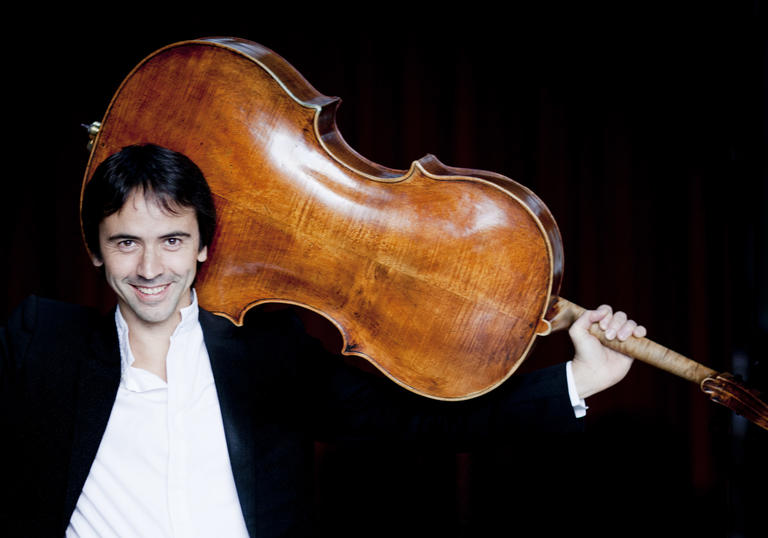
Programme and performers
2pm, Part 1
Ivan Fedele Arc-en-ciel
Johann Sebastian Bach Suite No 1 in G Major, BWV 1007`
Prelude – Allemande – Courante – Sarabande – Minuet I/II – Gigue
Jonathan Harvey Pre-echo for Jean-Guihen
Johann Sebastian Bach Suite No 2 in D Minor, BWV 1008
Prelude – Allemande – Courante – Sarabande – Minuet I/II – Gigue
3pm, Part 2
György Kurtág ‘Az hit...’ from Signs, Games & Messages
'Pilinszky János: Gérard de Nerval' from Signs, Games & Messages
‘Árnyak’ from Signs, Games & Messages
Johann Sebastian Bach Suite No 3 in C Major, BWV 1009
Prelude – Allemande – Courante – Sarabande – Bourrée I/II – Gigue
Gilbert Amy En-Suite Prelude to Suite No 4 by Bach
Johann Sebastian Bach Suite No 4 in E flat Major, BWV 1010
Prelude – Allemande – Courante – Sarabande – Bourrée I/II – Gigue
4.15pm, Part 3
Misato Mochizuki Pré-écho Prelude to Suite No 5 by Bach
Johann Sebastian Bach Suite No 5 in C Minor, BWV 1011
Prelude – Allemande – Courante – Sarabande – Gavotte I/II – Gigue
Ichiro Nodaira Enigma
Johann Sebastian Bach Suite No 6 in D Major BWV 1012
Prelude – Allemande – Courante – Sarabande – Gavotte I/II – Gigue
Jean-Guihen Queyras cello
Jean-Guihen Queyras
Curiosity, diversity and a firm focus on the music itself characterise the artistic work of Jean-Guihen Queyras, an interpretative approach learnt in a long artistic partnership with Pierre Boulez.
A keen player of both early music (collaborating with the Freiburg Baroque Orchestra and the Akademie für Alte Musik Berlin) and contemporary music, he’s given world premieres of works by Ivan Fedele, Gilbert Amy, Bruno Mantovani, Michael Jarrell, Johannes-Maria Staud, Thomas Larcher and Tristan Murail, and recorded Peter Eötvös’ Cello Concerto to mark his 70th birthday in November 2014.
Jean-Guihen Queyras was a founding member of the Arcanto Quartet. He’s also collaborated with zarb specialists Bijan and Keyvan Chemirani. Jean-Guihen has been an Artist-in-Residence with orchestras and festivals globally, as well as appearing with international orchestras alongside conductors Iván Fischer, Philippe Herreweghe, Yannick Nézet-Séguin, François-Xavier Roth, Sir John Eliot Gardiner and Sir Roger Norrington.
Jean-Guihen Queyras has recorded both Baroque and Contemporary works, including Elgar, Dvořák, Schoeller and Amy’s cello concertos, and Schumann’s complete piano trios with Isabelle Faust and Alexander Melnikov, and Schumann’s cello concerto with Freiburg Baroque Orchestra for Harmonia Mundi. His recording with the Chemirani brothers and Sokratis Sinopoulos THRACE - Sunday Morning Sessions explores the intersections of contemporary music, improvisation and Mediterranean traditions. He’s also released recordings with works by Carl Philipp Emanuel Bach and Antonio Vivaldi.
Jean-Guihen Queyras holds a professorship at the University of Music Freiburg and is Artistic Director of the Rencontres Musicales de Haute-Provence festival. He plays a 1696 instrument by Gioffredo Cappa, made available to him by the Mécénat Musical Société Générale.
